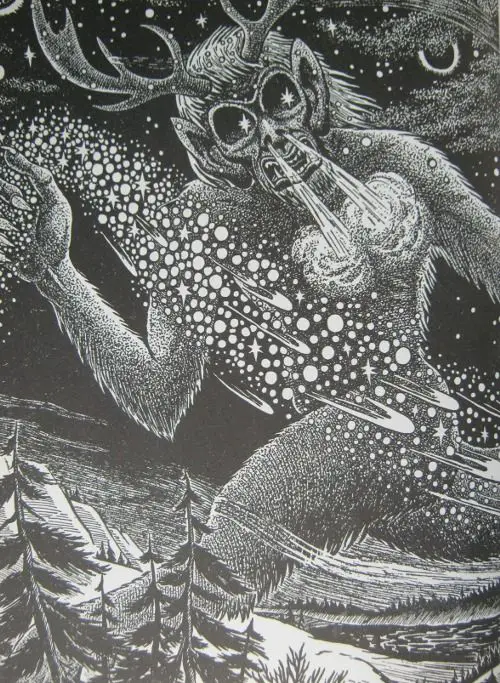Tag: Cree
Jack Fiddler, Wendigo's last hunter
(article by Gian Mario Mollar, originally published on Far west)
His name was Ojibwa Zhauwuno-Geezhigo-Gaubow, "He who stands out against the southern sky", and, in the Cree dialect, Maisaninnine o Mesnawetheno, "Man of Style," but the white men of the Hudson Bay Company nicknamed him Jack Fiddler. Born between 1830 and 1840 in the wild and lush land northwest of Lake Ontario, the son of a respected and feared shaman, he himself became the leader and shaman of the Sandy Lake Sucker tribe. At the time of his childhood, the region was deprived of animals and men, as the Hudson's Bay Company, dedicated to the fur trade, had now abandoned the outpost after years of intensive and indiscriminate hunting that had impoverished the territory. The Sucker tribe was thus forced to move further south, to Big Trout Lake, to trade and the young Zhauwuno-Geezhigo-Gaubow he worked for some time as a boatman, to transport furs to the York Factory.
The mysterious Natchez Indians, Children of the Sun
Among the myriad of populations that once inhabited the vast prairies of North America, the Natchez of the Southern Mississippi Valley. In fact, although belonging to the confederation of Cree tribes of the Muskogee language, they spoke a peculiar dialect and very distinct from that of the other populations of the South-East, called Natchesan. From the few sources that history has handed down to us it seems that their culture, of a sedentary type, was born around 700 AD and that it was strongly influenced by the great Mesoamerican civilizations, especially as regards the cult of the Sun — and of the deified ruler as his son—And the voluntary practice of immolation as a practice worthy of the highest honor.
Psychosis in the shamanic vision of the Algonquians: The Windigo
di Marco Maculotti
All the images accompanying this article
(except for the cover)
were generated away Craiyon. com
The aboriginal peoples of Canada, often settled in the reserves bordering the border with the United States, are now divided into tribes that bear different names (Algonquins, Cree, Ojibwa), although they mostly continue to share a very similar vision of man and his relationship with nature and with spirits - and, as it is easy to imagine, the same mythology. In the magical-shamanic universe that founds the vision of these populations - today the last bastion of wisdom that characterized the entire native population of North America for centuries - the spirits with which man can enter into communication are generally called manita - the same word that, with a capital letter, identifies the universal divine Being, the sacred energy that permeates everything.




